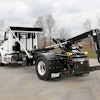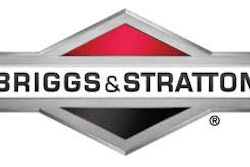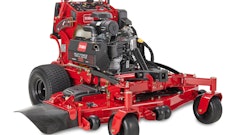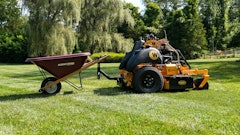
Budgets come in all shapes and sizes. Thinking about a comprehensive budget can be an overwhelming proposition. Many small business owners get bogged down in the details, and decide they won’t have the time or the knowledge to do it right, so why do it at all. But that doesn’t have to be the case. While your time is scarce, you need to be sure your business is profitable.
Dealers and landscape contractors have many reasons to put together a formal budget. It is an excellent tool for business planning. It will make achieving the goals you have for your business more manageable. It will provide you with powerful bargaining power with your banker. The most important thing your budgeting will do is protect and improve your financial performance and position.
It is important to think of your budget as a “living” document. By careful planning, it will help you anticipate and prepare for changes in your business. But it can also be adjusted to accommodate the changes you couldn’t anticipate (for instance, weather).
Your budgeting tools should not just your history, but more importantly, forecast the future (one year) for your business. History is important to use as a gauge for future performance, but there are many other factors to include when determining your projections. Think about cost increases, industry trends, changing customer buying habits—anything that will affect the sales, productivity and profitability of your business.
Start with the basics
A budget can include as much or as little detail as you need to manage your business and determine profit. The exact design is completely up to you, and you will probably tweak the design over time until you come up with the perfect design for your business. However, as a starting point, we can discuss certain elements every budget should contain to give you an accurate picture of the performance of your business.
Consider also that it may best serve your business to do “departmentalized budgeting.” This is where you create a separate budget for each profit center. For instance, you may have one for the maintenance department, one for installation and one for irrigation. For simplicity’s sake, we will combine them in one budget for our example. But as you grow, you may want to consider departmentalized budgeting for more efficient management of your company.
When making a budget, the best place to start is with last year’s income statement. This will give you a reasonable benchmark to help determine what your projections will be in your budget.
What to include in the budget
Every budget should include projections for each category in the income statement. The basic categories are: revenue, the cost of goods sold, expenses and taxes to determine net income.
Set a reasonable goal for the New Year
The first question to ask yourself is: How much do you want to grow in sales next year? What will be a reasonable increase? Once you have a percentage of sales growth, you will look at each line item of expenses and determine what you can do to reach your goal at the bottom line.
Revenue
Revenue is, of course, sales. Think about how you can increase sales. Can you broaden your product line? (Remember to reflect that additional cost in your inventory expense). Can you target a new customer market? (Remember to reflect additional costs in marketing expenses).
Cost of goods sold
The next section is the “cost of goods sold.” It should include such items as materials, labor and subcontractors. Will any of these costs be going up? Is there anything you can do to reduce your cost in any of these areas?
After determining these two figures, subtract cost of goods sold from revenue. The amount left over is listed as “gross profit” or “profit contribution.”
Expenses
The “expenses” section can be categorized into departments. Common departments include sales (or direct) expenses and operating (or indirect) expenses.
Sales, or direct expenses, include any costs related directly to the sale of product, including sales people’s salaries, commissions, benefits, advertising and marketing, to name a few. When budgeting for next year, consider these questions: Are we hiring more sales staff? Are we increasing our marketing budget? Will we be instituting a new incentive program for sales people?
Operating (or indirect) expenses are your rent or mortgage, property tax, utilities and insurance. Many of these expenses don’t vary much, and are easy to anticipate (for example, the mortgage or rent). Operating expenses also include general administration costs, such as: consulting costs (by your accounting firm, lawyer, etc.), computer supplies, depreciation and amortization, licenses, office supplies and telephone.
Operating costs also include certain personnel expenses, such as salaries and benefits for non-sales staff, payroll taxes, group life and health insurance, workers comp insurance and employee benefit plans.
To develop your budget, think about what costs will increase in your operating expenses. Are you starting a health insurance program this year? Is it time to buy a new software package for your computer?
Operating expenses is also a good place to look for potential savings in the new year. Will your manager's truck be paid off in the coming year? Would switching to a new long-distance carrier shrink your phone bill?
Net income
Subtract each of these items from your “gross profit.” The amount remaining is your “income before taxes.” Finally, subtract your income taxes and the final amount is your projected “net income.” Is it in line with your projected goal for the New Year? If not, work your way back up through each line item and determine where you can either lower expenses or raise revenue to bring it in line with your goal.
Finally, divide the numbers out monthly, January through December. While some businesses can simply divide by 12, it is important for dealers to figure in the seasonality of the business. Be sure to reflect the busy months in spring and fall, as well as those lean winter months.

![Gravely Pro Turn Mach One My23 Dsc03139 Edit 1200x800 5b2df79[1]](https://img.greenindustrypros.com/mindful/acbm/workspaces/default/uploads/2025/10/gravely-pro-turn-mach-one-my23-dsc03139-edit-1200x800-5b2df791.BucBnDoN22.jpg?auto=format%2Ccompress&fit=crop&h=100&q=70&w=100)












![U8kj71gt 720[1]](https://img.greenindustrypros.com/mindful/acbm/workspaces/default/uploads/2025/10/u8kj71gt-7201.8OyDyc124u.jpg?ar=16%3A9&auto=format%2Ccompress&fit=crop&h=135&q=70&w=240)




